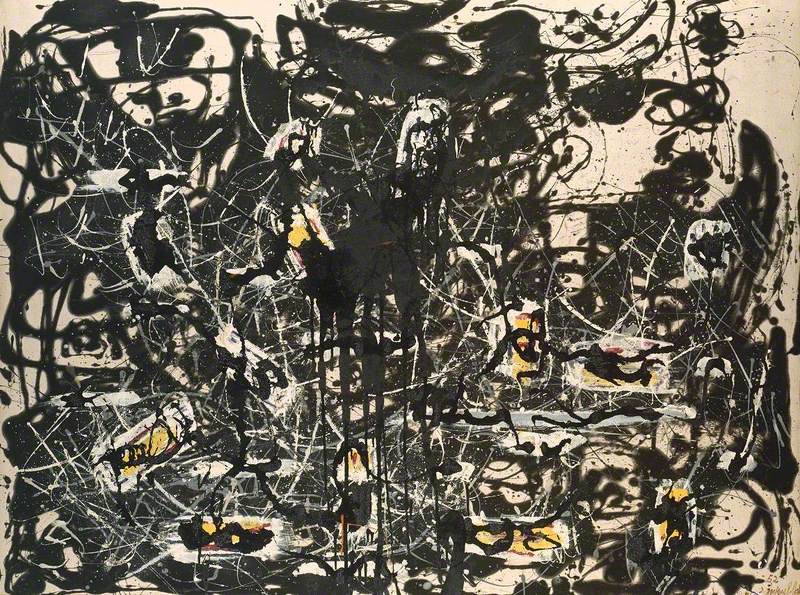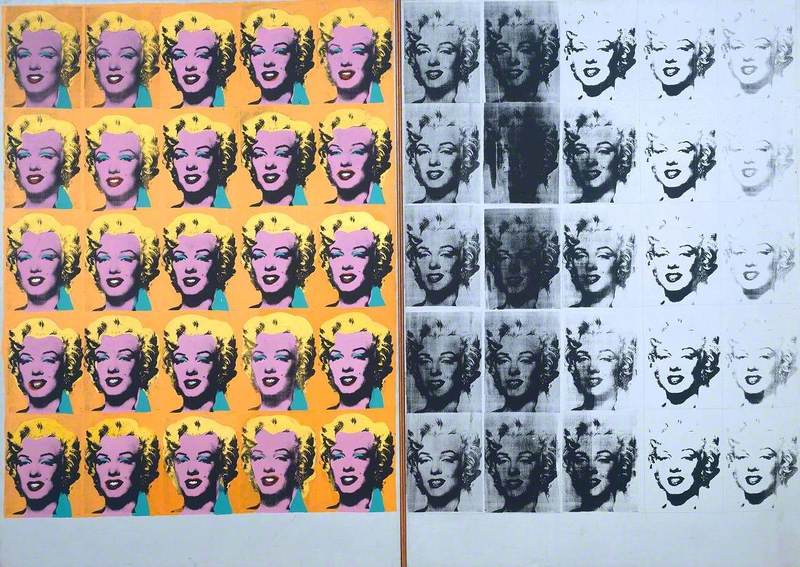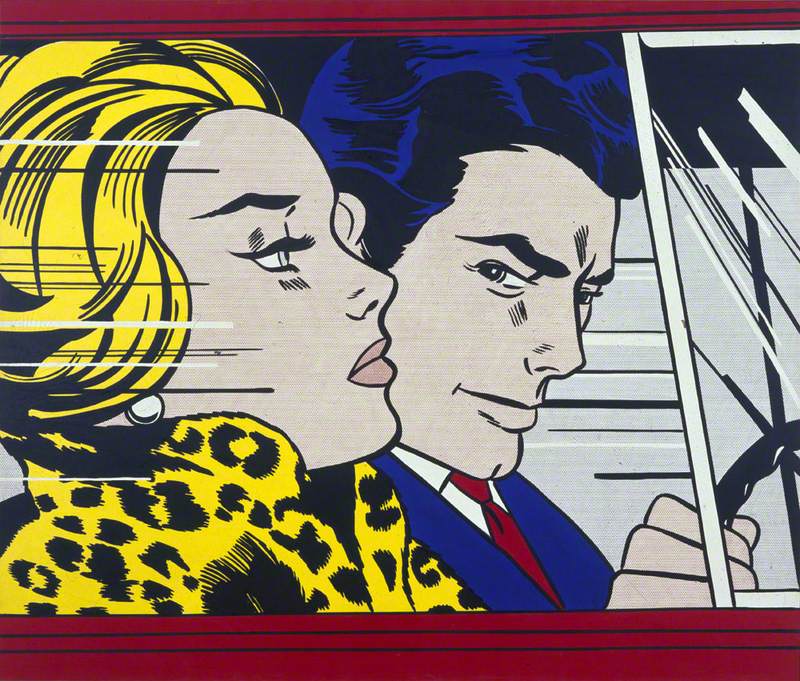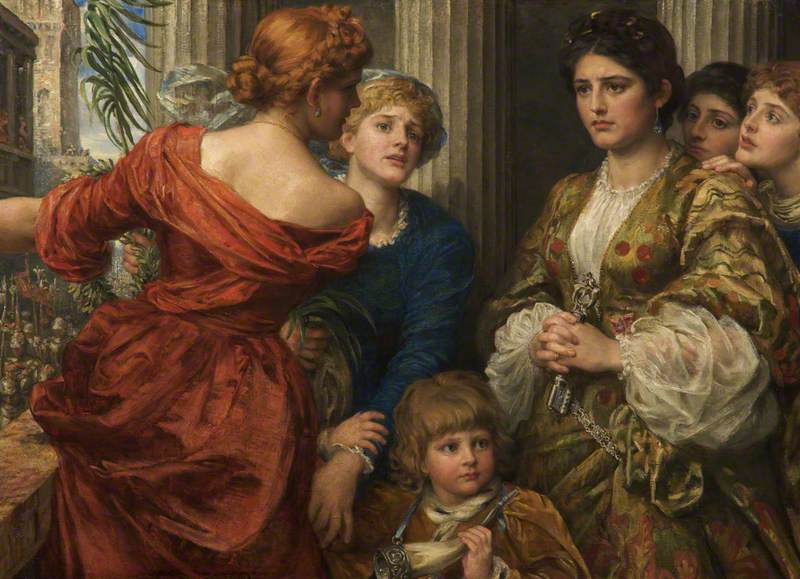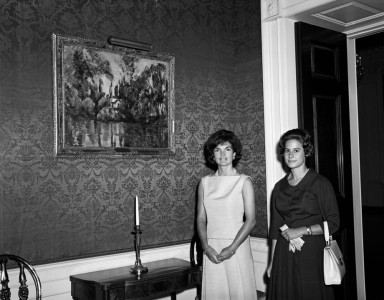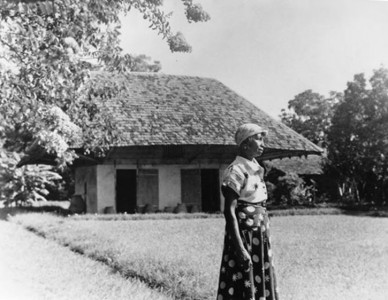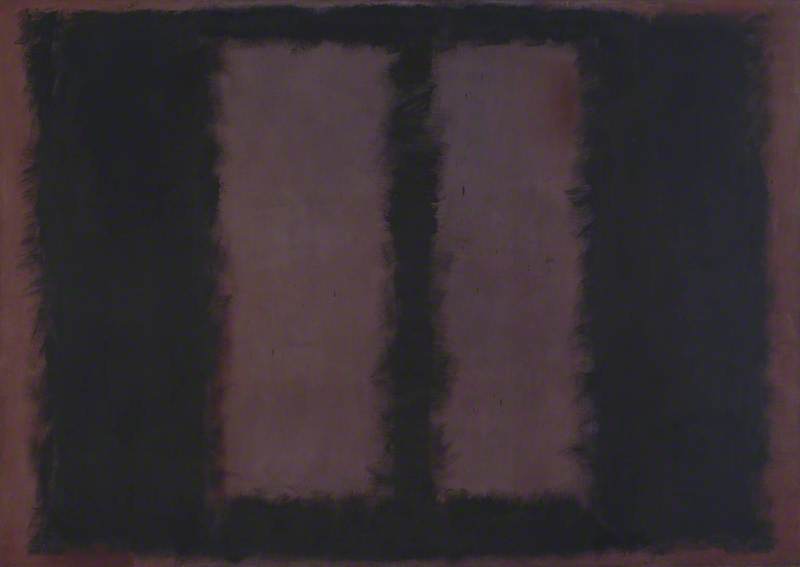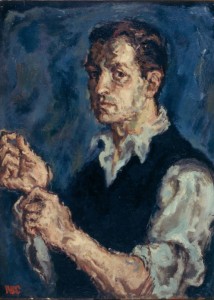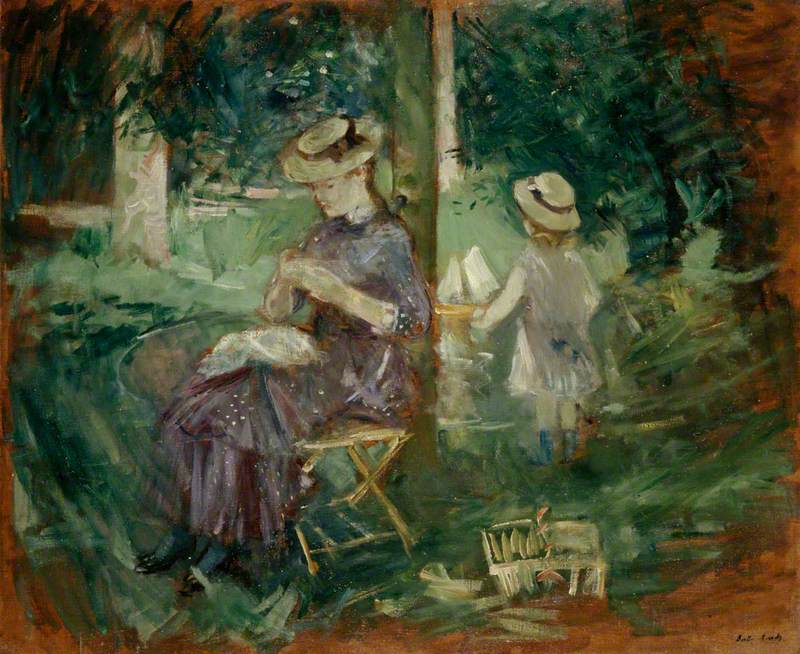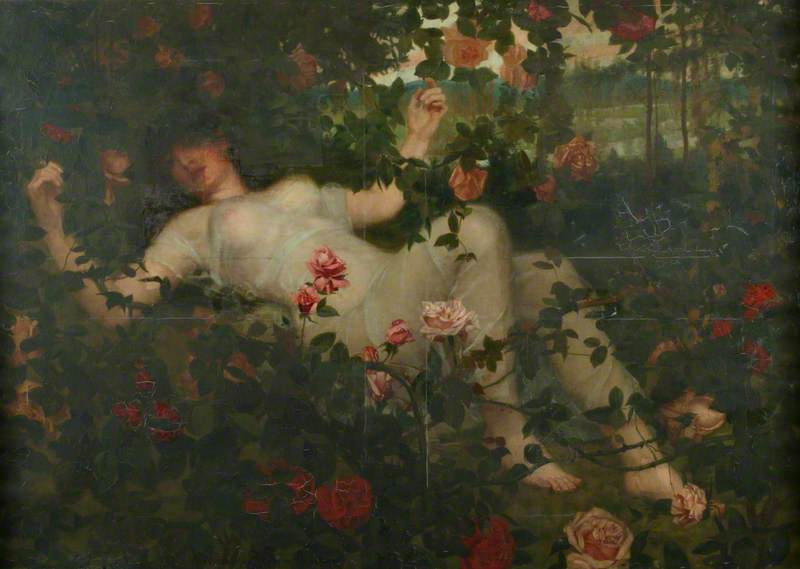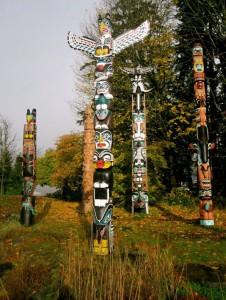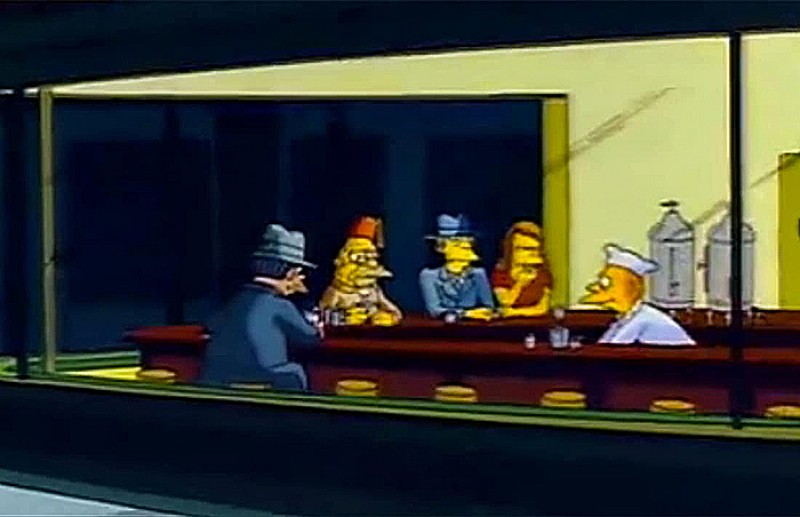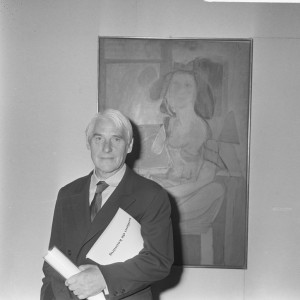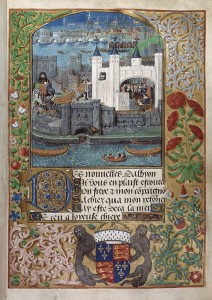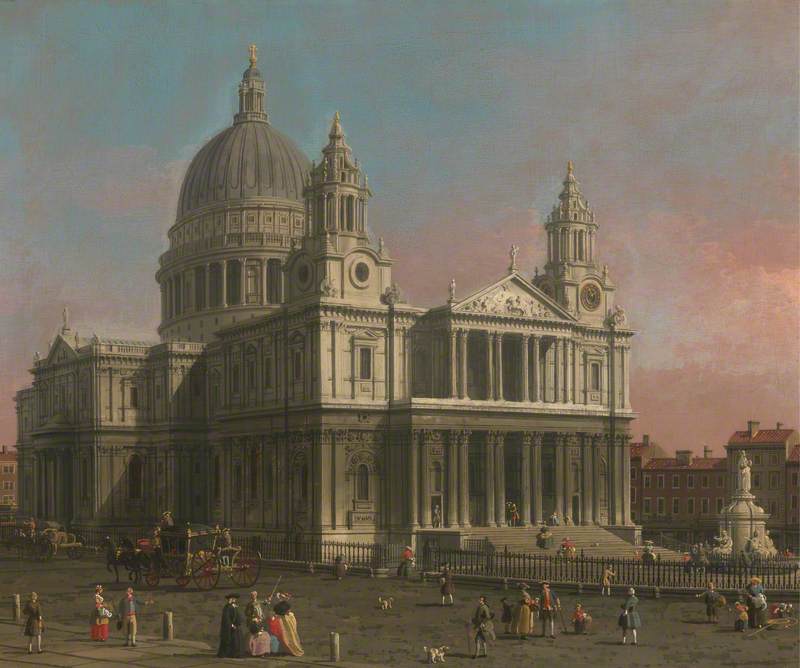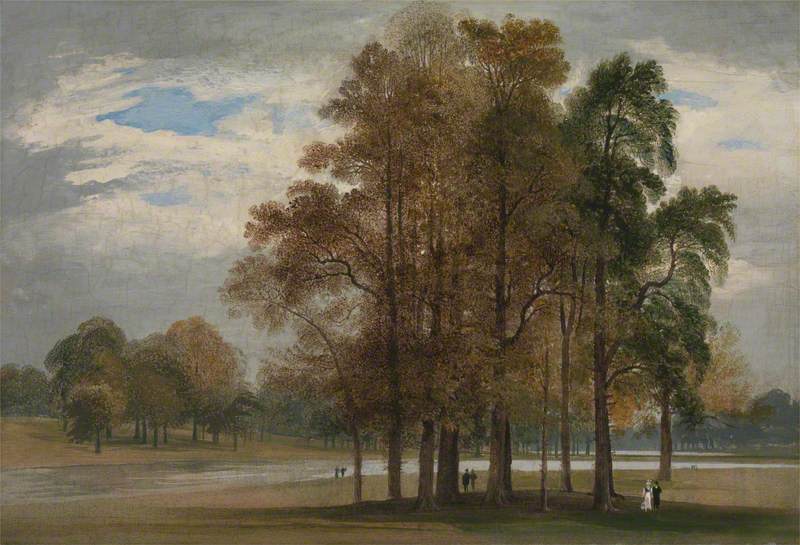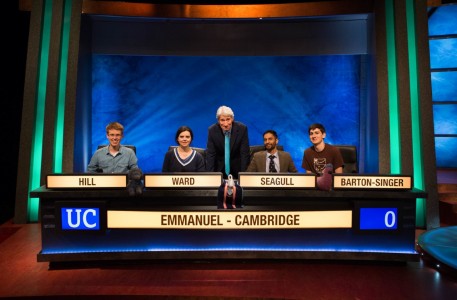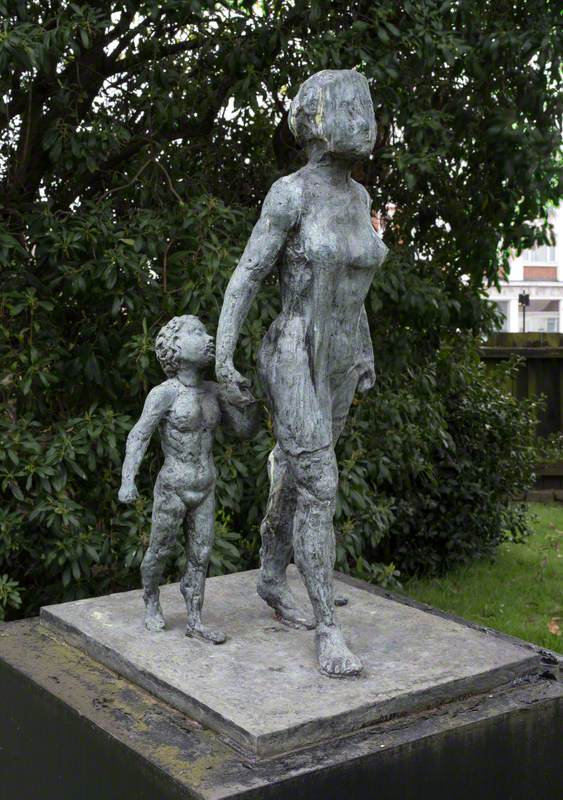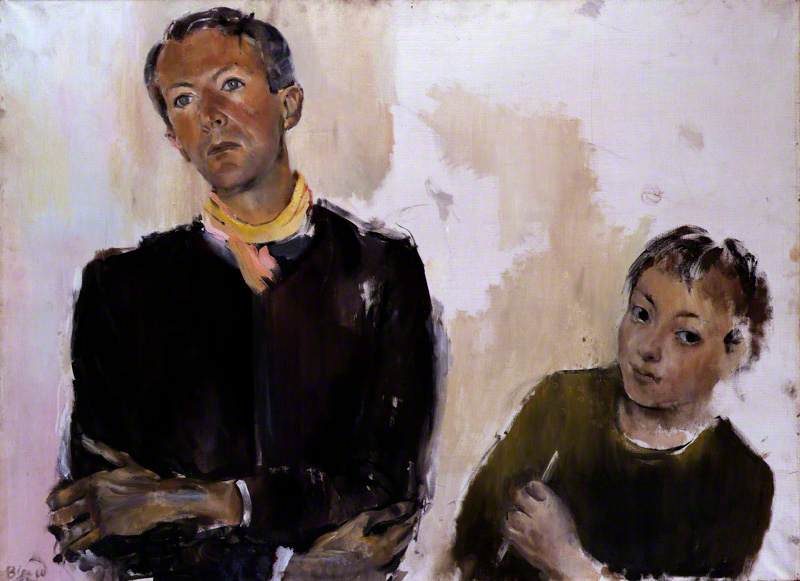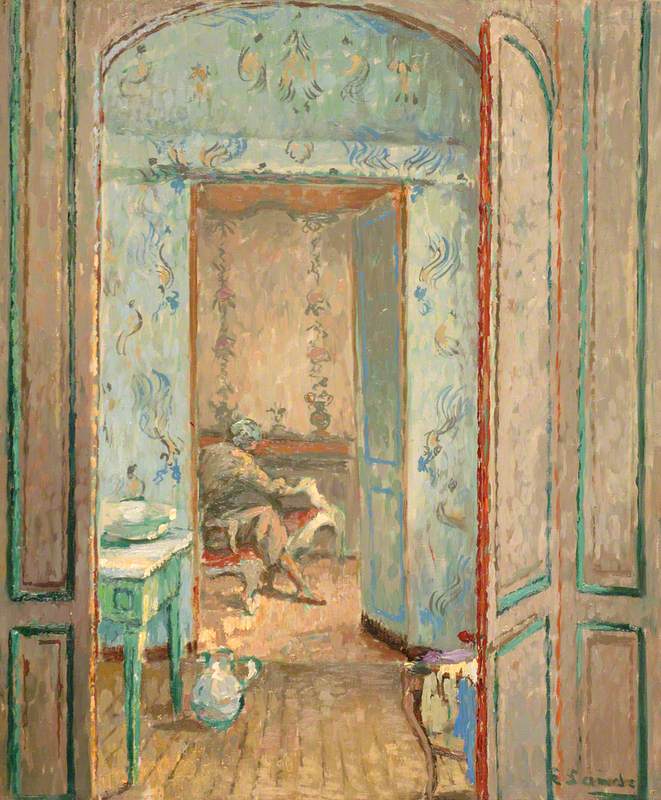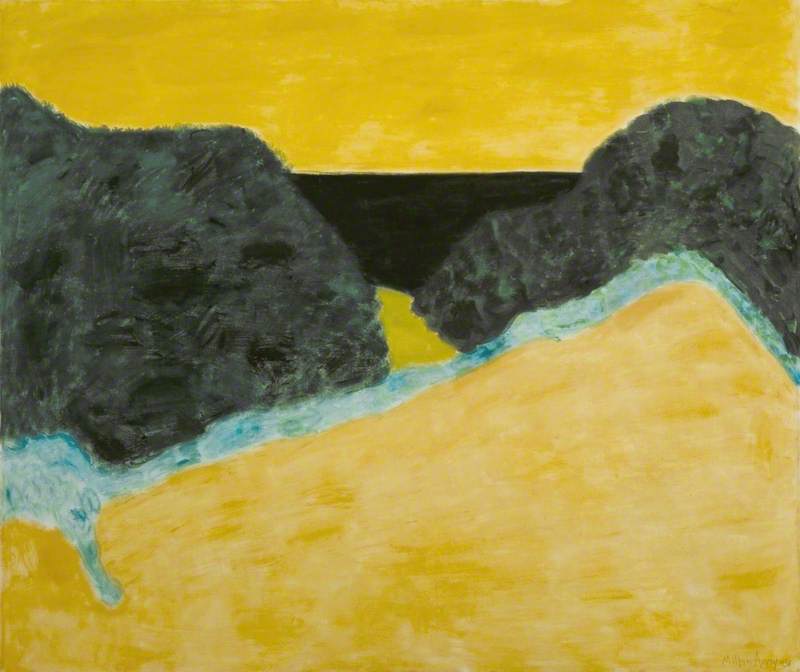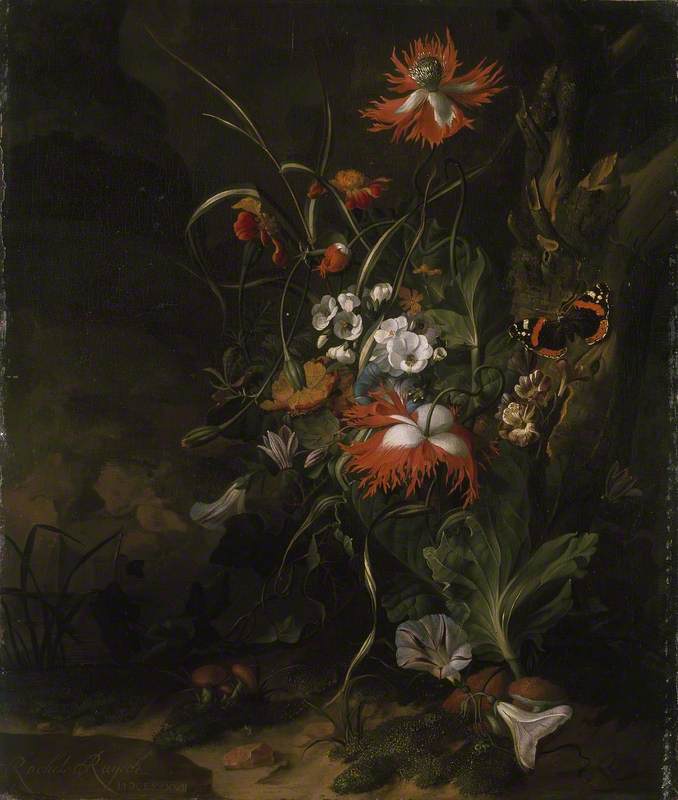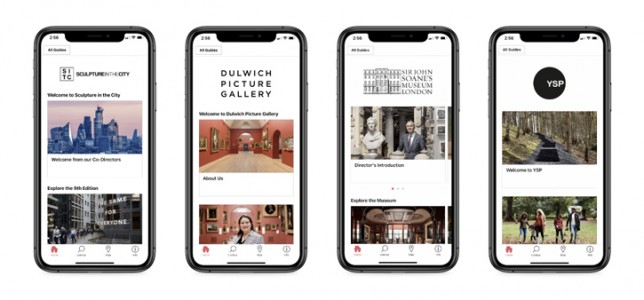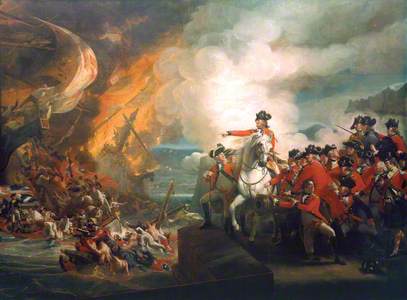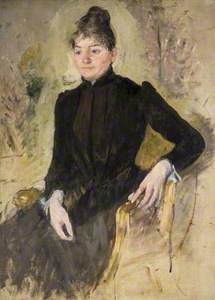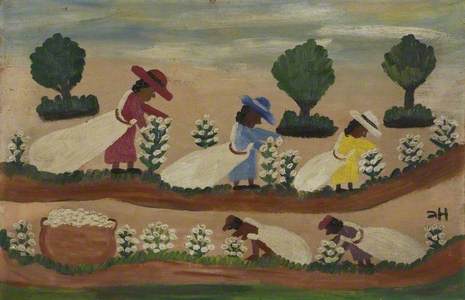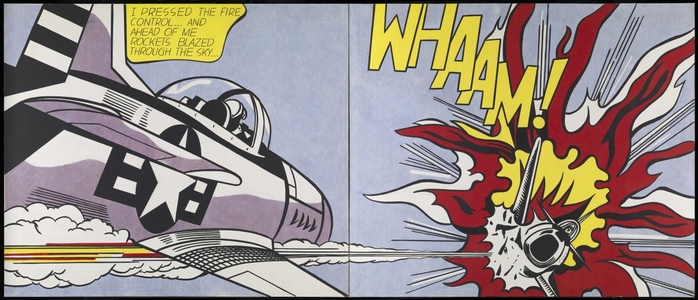When you think of American art, perhaps you think of the Pop Art scene and Abstract Expressionism – but there’s more to US art than that! Cue fireworks and music for a quick look at some of the American art that’s crossed the pond.
The ones you might know
Jackson Pollock (1912–1956) is known today for his Abstract Expressionist works, dating from the late 1940s and early 1950s. He employed the technique of dripping and pouring paint to inform his work with a sense of freedom and intuition. Pollock began this 1952 painting by pouring black paint onto the canvas, later adding yellow and crimson with a brush. He then lifted the canvas upright while the paint was still wet, allowing it to sag and run.
Famous for a great deal longer than 15 minutes, works by Andy Warhol (1928–1987) have filtered into the public’s consciousness like perhaps no other artist before or since. More than 30 years after his death, his works continue to speak to ideas of mass production, commercialisation and the blurring of lines between everyday life and high art. This diptych in the Tate collection was produced after the death of Marilyn Monroe in August 1962. It has become nearly as iconic as the actress herself. In this period, Warhol made more than 20 silkscreen paintings of Marilyn, all based on the same publicity photo from the 1953 film Niagara.
Roy Lichtenstein (1923–1997) began his career as an Abstract
Let’s go back a little – to the 19th century
Niagara Falls, from the American Side
1867
Frederic Edwin Church (1826–1900) 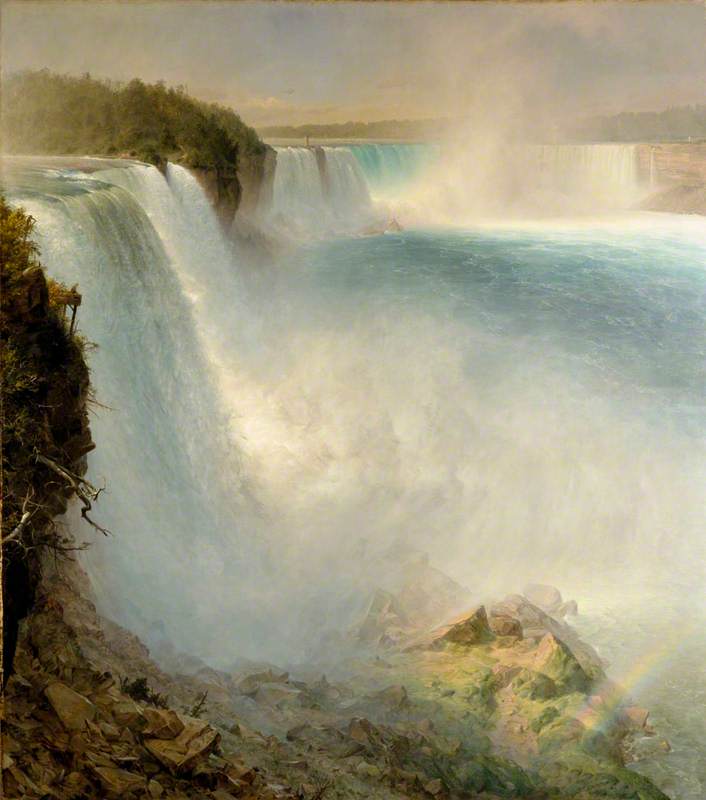
The paintings of Frederic Edwin Church (1826–1900) often depict spectacular natural scenery. He was part of the Hudson River School movement, and his 1857 Niagara (now in the National Gallery of Art, Washington) established him as the most famous painter in the USA. In this 1867 work, he revisits the drama of Niagara Falls, one of the country's most famous landmarks. This painting was bought in 1887 by John S. Kennedy who presented it to his native Scotland. It is the only major example of Church's work in a European public collection.
Arrangement in Grey and Black, No. 2: Portrait of Thomas Carlyle
1872–1873
James Abbott McNeill Whistler (1834–1903) 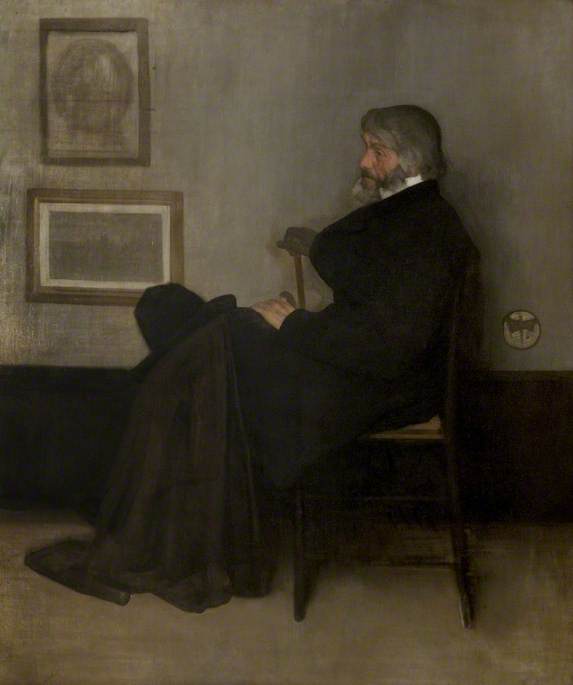
By contrast, James Abbott McNeill Whistler (1834–1903) is much better represented in UK public collections. This is unsurprising as he worked largely in Britain. Today his most famous painting is Arrangement in Grey and Black, No 1, popularly known as Whistler’s Mother. That’s in the Musée d’Orsay in Paris, but it has a lesser-known sister work. Arrangement in Grey and Black, No. 2 is a portrait of the Scottish philosopher and historian Thomas Carlyle, one of Whistler’s fans! The work is similarly staged to the more famous one of his mother, and it’s in the collection of the Kelvingrove Art Gallery and Museum in Glasgow.
Near the Mount of Olives, Jerusalem
c.1905–1906
John Singer Sargent (1856–1925) 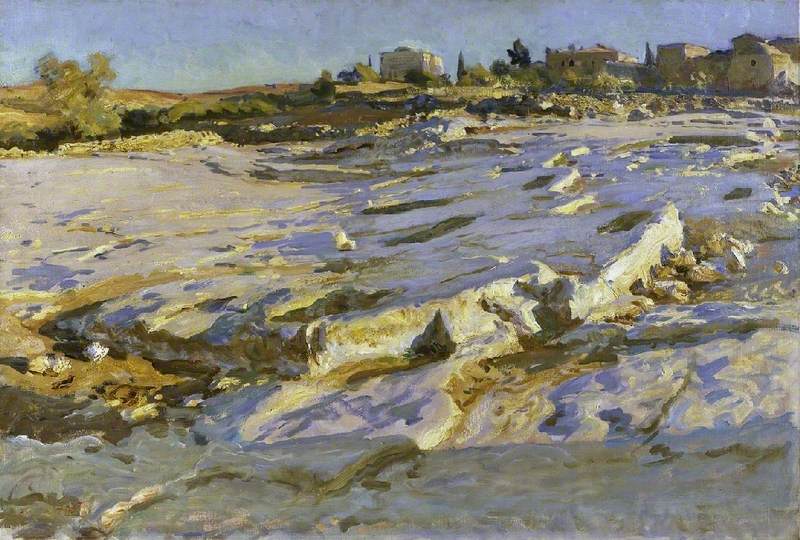
John Singer Sargent (1856–1925) was considered the leading portrait painter around the turn of the 20th century. The Tate owns a study for his Portrait of Madame X, possibly his most recognisable work, but this is a bit different. Although known for his portraiture, he also created a number of landscapes. This was painted near the Mount of Olives in Jerusalem around 1905 or 1906. It was donated by the artist’s sisters to The Fitzwilliam Museum in Cambridge, a few years after his death.
OK, going right back – to 1776 and all that
Defeat of the Floating Batteries at Gibraltar, September 1782 (The Siege of Gibraltar)
1783–1791
John Singleton Copley (1738–1815) 
John Singleton Copley (1738–1815), described by The Oxford Dictionary of Art and Artists as ‘the greatest American painter of the 18th century’, was active in both colonial America and England. He was probably born in Boston,
Copley’s job as an artist, and the political situation of the
It’s not just men!
Born in Philadelphia, Anna Lea Merritt (1844–1930) studied anatomy before moving to Europe in 1865. Then, to escape the Franco-Prussian War, in 1870 she moved to London. Her best-known work is Love Locked Out, painted for her husband after he died only three months into their marriage. This 1883 work, entitled War, is part of the collection at Bury Art Museum.
Mary Stevenson Cassatt (1844–1926) was an American painter and printmaker. She was born in Pennsylvania, but settled in Paris in 1874, and befriended Edgar Degas. She later exhibited among the Impressionists, taking part in four of their eight group shows (1879, 1880, 1881, 1886). She specialised in everyday life scenes, her favourite theme being a mother with her child or children. This portrait of a woman is part of the collection of the Birmingham Museums Trust.
Interior with Still Life and Picture of the Madonna and Child
Ethel Sands (1873–1962) 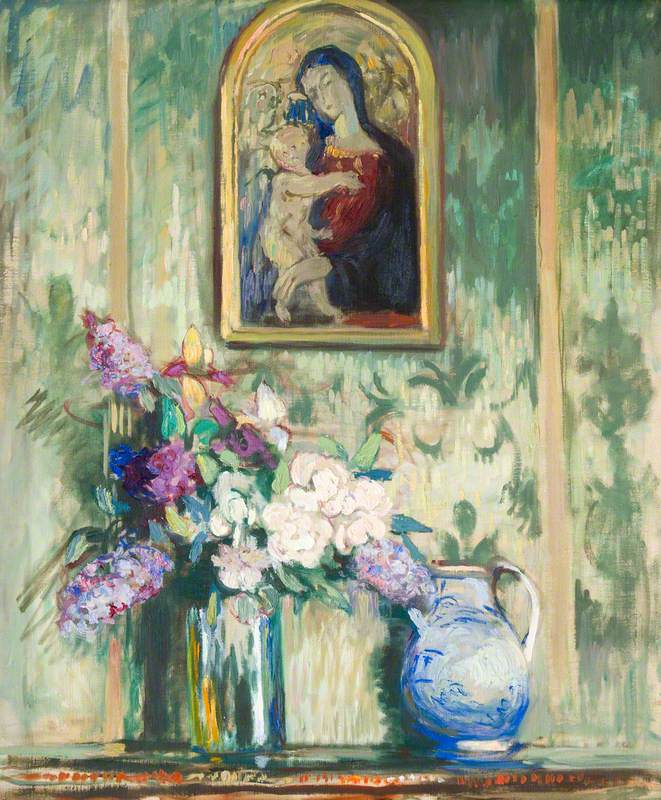
Ethel Sands (1873–1962) born in Rhode Island, but in 1879 settled in England with her wealthy socialite parents. In 1894 she went to Paris, where she studied art and met her life partner, the painter Anna Hope (‘Nan’) Hudson. As well as pursuing her art, she was a society hostess, mixing with the likes of William Ewart Gladstone, Henry James, John Singer Sargent, the Rothschild family, and even the Prince of Wales (later Edward VII). This
Not all American art came out of the social circles of the rich and famous. Clementine Hunter (1887–1988) was born in the Cane River region of Louisiana just two decades after the American Civil War – her grandparents had been enslaved African Americans. Hunter was
A few hidden gems
Cottages, Achill Island, County Mayo
1913
Robert Henri (1865–1929) 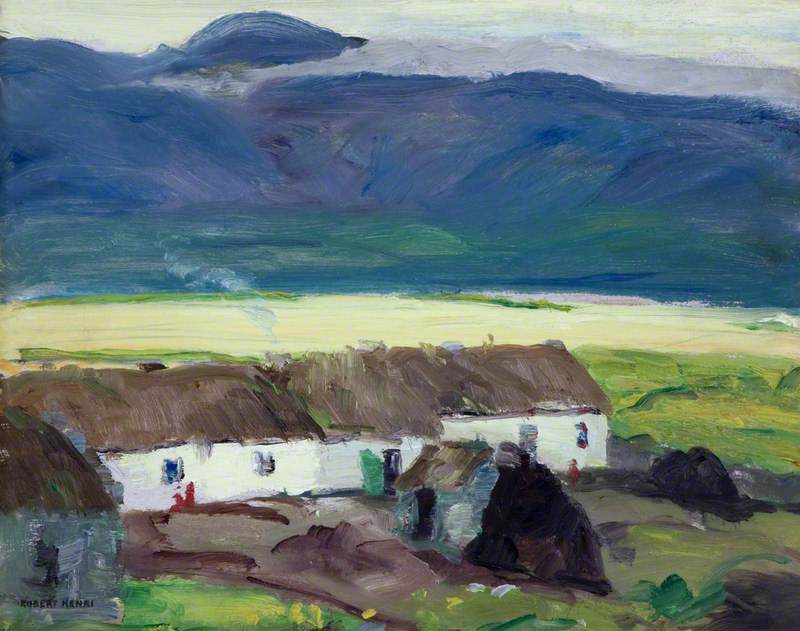
Robert Henri (1865–1929) was a leading figure of the Ashcan School of American realism, and he also taught at the New York School of Art. He protested against restrictive exhibition practices of the powerful, conservative National Academy of Design. This colourful work depicts cottages in Co. Mayo, and is in the collection of Ulster Museum.
One of Henri’s students was George Bellows (1882–1925), who was also part of the Ashcan School. Bellows painted this striking nude in 1906 when he was studying under Henri at the New York School of Art. It is now in the collection of the Barber Institute of Fine Arts in Birmingham. It demonstrates his confident ability to apply paint directly and quickly as well his admiration for earlier European realist artists, such as Manet and Courbet.
The only living American artist on this relatively short list is New York-based John Currin (b.1962). His figure paintings, usually of women, have attracted both attention and controversy. In this work, Currin puts his own twist on the female nude by combining art-historical references with the fantasies of advertising and pornography. The woman’s body and pose recall Botticelli’s Birth of
But why no more living artists? Well, many of the most exciting contemporary American artists are working in mediums other than oil paint, and museums and galleries are collecting their prints and drawings – for example Jasper Johns, Kara Walker, Ed Ruscha, Julie Mehretu and Chuck Close. As we add more of these works to Art UK, we will let you know!
What
Andrew Shore, Head of Content at Art UK
